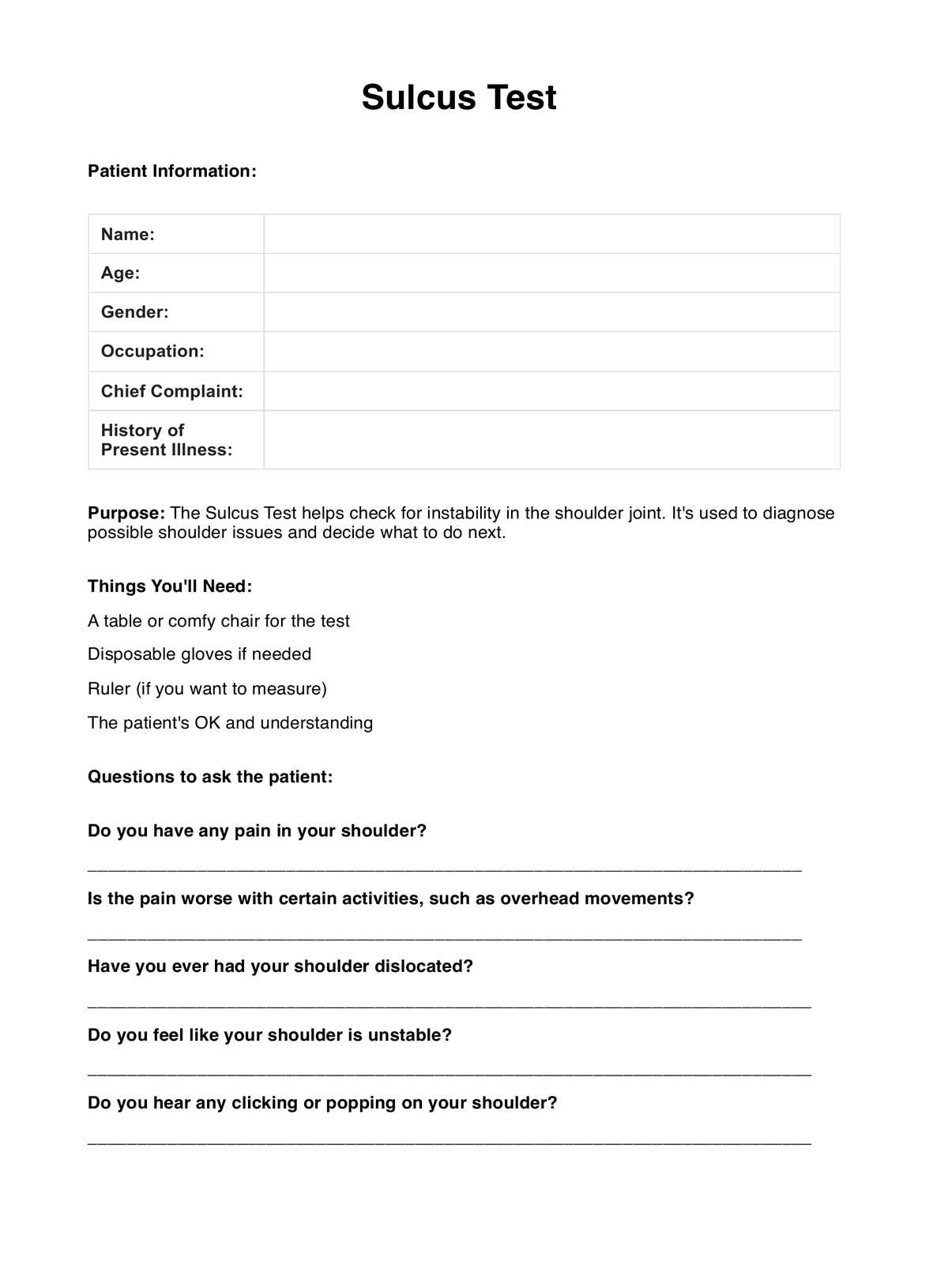Orthopedic professionals, sports medicine practitioners, and clinicians specializing in shoulder assessments commonly use Sulcus Tests.

Sulcus Tests
Use our free Sulcus Test for an enhanced orthopedic practice. Dive into its use step-by-step process and download a free PDF example here.
Use Template
Sulcus Tests Template
Commonly asked questions
Sulcus Tests are employed to assess shoulder stability, especially in suspected inferior or multidirectional instability cases.
During Sulcus Tests, the examiner stabilizes the shoulder girdle, holds the patient's elbow, and gently pulls downward to observe for a visible sulcus or step-off deformity between the acromion and humeral head, indicating potential instability.
EHR and practice management software
Get started for free
*No credit card required
Free
$0/usd
Unlimited clients
Telehealth
1GB of storage
Client portal text
Automated billing and online payments











